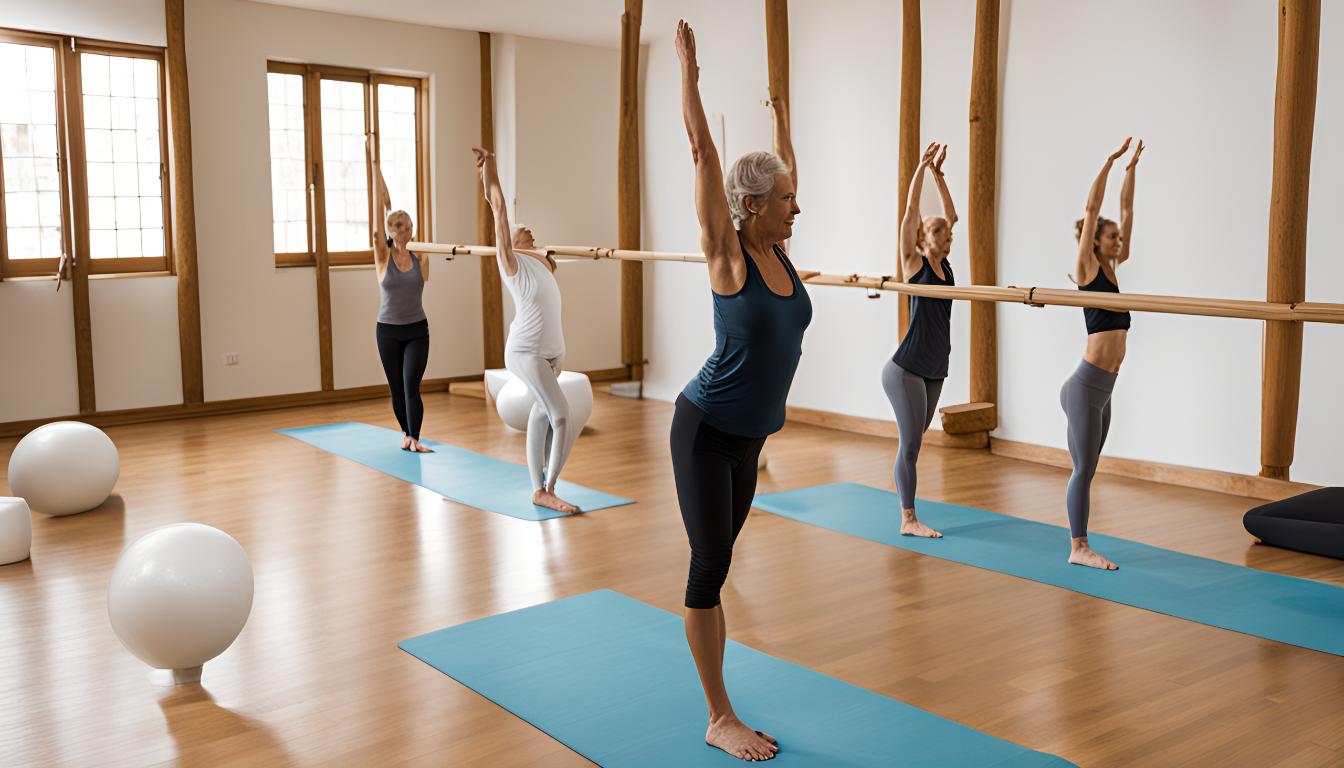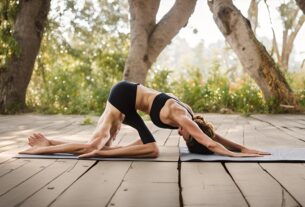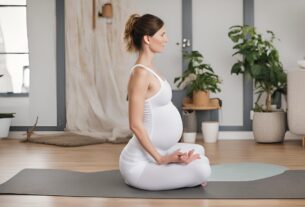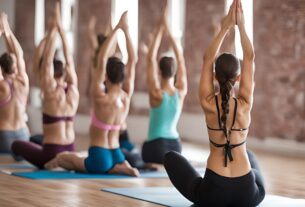Iyengar Yoga, a method pioneered by B.K.S. Iyengar, stands out within the realm of yoga for its meticulous attention to alignment, precision in postures (asanas), and its use of props to assist practitioners of all abilities. This approach not only aims to refine physical alignment but also deepens awareness of the body and mind through prolonged holds in each pose. Here, we delve into the core aspects of Iyengar Yoga, explore common asanas across different categories, discuss its benefits, and examine why it is a favored practice for both beginners and experienced yogis alike.
Core Principles of Iyengar Yoga
Iyengar Yoga is rooted in several foundational principles that guide its practice and distinguish it from other yoga styles:
1. Alignment and Precision: Central to Iyengar Yoga is the emphasis on correct alignment of the body in each pose. This alignment is not merely aesthetic but serves to optimize the flow of energy (prana) through the body, enhance the effectiveness of the pose, and prevent injury.
2. Use of Props: Props such as blocks, straps, blankets, and bolsters are integral to Iyengar Yoga. These props are used strategically to support the body, assist in achieving proper alignment, and make the poses accessible to practitioners of varying abilities. Props are particularly helpful in modifying poses to suit individual needs, enhancing stability, and facilitating deeper stretches.
3. Sequencing and Timing: Iyengar Yoga follows a structured sequence of asanas, progressing from simple to more complex poses. Poses are often held for longer durations compared to other yoga styles, allowing practitioners to explore and refine each posture deeply. This extended hold fosters introspection, mindfulness, and a profound connection with the body.
4. Awareness and Mindfulness: Practitioners of Iyengar Yoga are encouraged to cultivate awareness of their body, breath, and mental state throughout the practice. This mindfulness enhances concentration, promotes relaxation, and deepens the overall yoga experience beyond the physical realm.
5. Adaptability and Accessibility: One of the hallmarks of Iyengar Yoga is its accessibility to individuals with physical limitations, injuries, or health concerns. The use of props and the methodical approach to alignment make it possible for almost anyone to practice yoga safely and effectively, regardless of age, fitness level, or flexibility.
Common Iyengar Yoga Asanas
Iyengar Yoga encompasses a wide range of asanas that are categorized into standing poses, seated poses, forward bends, backbends, twists, inversions, restorative poses, and pranayama (breathing practices). Here are examples of some common asanas from each category:
Standing Poses
1. Tadasana (Mountain Pose):
– Description: Standing with feet together or hip-width apart, arms by the sides, focusing on grounding through the feet and lengthening the spine.
– Benefits: Improves posture, strengthens legs and core, promotes awareness of alignment.
2. Utthita Trikonasana (Extended Triangle Pose):
– Description: Legs wide apart, torso extended over one leg, reaching the opposite arm towards the sky and resting the other hand on the leg or a block.
– Benefits: Stretches hamstrings and hips, strengthens legs, improves spinal alignment.
3. Virabhadrasana II (Warrior II):
– Description: Wide-legged stance, bending one knee over the ankle, arms extended parallel to the floor, gaze over the front fingertips.
– Benefits: Builds stamina and concentration, strengthens legs, opens hips and chest.
Seated Poses
1. Dandasana (Staff Pose):
– Description: Sitting with legs extended in front, feet flexed, hands beside hips, spine long and straight.
– Benefits: Improves posture, strengthens back and core muscles, stretches hamstrings.
2. Baddha Konasana (Bound Angle Pose):
– Description: Soles of the feet together, knees wide apart, folding forward from the hips, maintaining a flat back.
– Benefits: Opens hips and groin, stimulates abdominal organs, stretches inner thighs and groins.
3. Paschimottanasana (Seated Forward Bend):
– Description: Legs extended, folding forward from the hips, reaching for the feet or using a strap.
– Benefits: Stretches the spine, hamstrings, and calves, calms the mind, improves digestion.
Forward Bends
1. Uttanasana (Standing Forward Bend):
– Description: Feet hip-width apart, folding forward from the hips, hands reaching towards the floor or holding elbows (using a strap if needed).
– Benefits: Releases tension in the spine and neck, stretches hamstrings and calves, calms the mind.
2. Prasarita Padottanasana (Wide-Legged Forward Bend):
– Description: Legs wide apart, folding forward from the hips, hands on the floor or on blocks between the legs.
– Benefits: Stretches the hamstrings, calves, and spine, relieves mild backache, improves circulation.
Backbends
1. Setu Bandhasana (Bridge Pose):
– Description: Lying on the back, knees bent, feet hip-width apart, lifting hips towards the sky, optionally clasping hands underneath the body.
– Benefits: Strengthens the back, buttocks, and hamstrings, opens the chest and shoulders, stimulates abdominal organs.
2. Urdhva Mukha Svanasana (Upward-Facing Dog):
– Description: From prone position, palms pressing into the mat, lifting chest and thighs off the mat, shoulders away from ears.
– Benefits: Stretches the chest, shoulders, and abdomen, strengthens the arms and wrists, improves posture.
Twists
1. Parivrtta Parsvakonasana (Revolved Side Angle Pose):
– Description: From Warrior II, one hand on the mat inside the front foot, twisting torso, extending opposite arm towards the sky.
– Benefits: Increases spinal flexibility, tones abdominal organs, improves digestion, enhances detoxification.
2. Bharadvajasana (Bharadvaja’s Twist):
– Description: Sitting with legs extended, bending one knee, placing foot over opposite thigh, twisting towards bent knee, holding foot or knee.
– Benefits: Stretches the spine and shoulders, massages abdominal organs, improves spinal mobility.
Inversions
1. Salamba Sarvangasana (Supported Shoulderstand):
– Description: Lying on the back, lifting legs and lower back off the mat, supporting hips with hands, extending legs towards the sky.
– Benefits: Increases blood circulation to the brain, strengthens the shoulders and arms, improves thyroid function.
2. Salamba Sirsasana (Supported Headstand):
– Description: Interlacing fingers, forearms on the mat, crown of head on the ground, lifting legs off the mat, extending towards the ceiling.
– Benefits: Enhances focus and concentration, strengthens the core muscles, improves overall balance.
Restorative Poses
1. Supta Baddha Konasana (Reclining Bound Angle Pose):
– Description: Lying on the back, soles of feet together, knees wide apart, using props like blankets or bolsters under back and head.
– Benefits: Opens the hips and groin, relaxes the lower back and spine, promotes deep relaxation and stress relief.
2. Supported Savasana (Corpse Pose):
– Description: Lying on the back, legs extended, arms by sides, props under knees and head for relaxation and release.
– Benefits: Promotes complete relaxation, reduces fatigue and insomnia, allows for integration of the benefits of the practice.
Pranayama (Breathing Practices)
Integral to Iyengar Yoga, pranayama techniques are practiced seated or reclining to deepen breath awareness and its effects on the body and mind. These techniques include deep belly breathing, ujjayi breath (oceanic breath), and specific pranayama exercises aimed at calming the mind and balancing the nervous system.

Benefits of Iyengar Yoga
Iyengar Yoga offers a multitude of benefits that encompass physical, mental, and emotional well-being:
– Alignment and Posture: The emphasis on precise alignment helps to correct imbalances, improve posture, and prevent injuries. This alignment-focused approach ensures that the body moves in a harmonious and efficient manner during practice.
– Flexibility and Strength: Through the use of prolonged holds in poses, Iyengar Yoga enhances flexibility by stretching and lengthening muscles, tendons, and ligaments. It also builds strength, particularly in the core and stabilizing muscles, which supports overall physical stability and balance.
– Mindfulness and Concentration: The practice of Iyengar Yoga cultivates mindfulness by encouraging practitioners to focus on the present moment, their breath, and the sensations in their body. This heightened awareness improves concentration, mental clarity, and the ability to manage stress effectively.
– Therapeutic Benefits: Iyengar Yoga is highly therapeutic and can be adapted to accommodate various health conditions or physical limitations. It is beneficial for individuals recovering from injuries, managing chronic pain, or seeking rehabilitation. The use of props allows for modifications that make the practice safe and accessible, promoting healing and recovery.
– Stress Reduction and Relaxation: The combination of breath awareness, prolonged holds in poses, and relaxation techniques promotes deep relaxation and stress relief. Practicing Iyengar Yoga helps to calm the nervous




